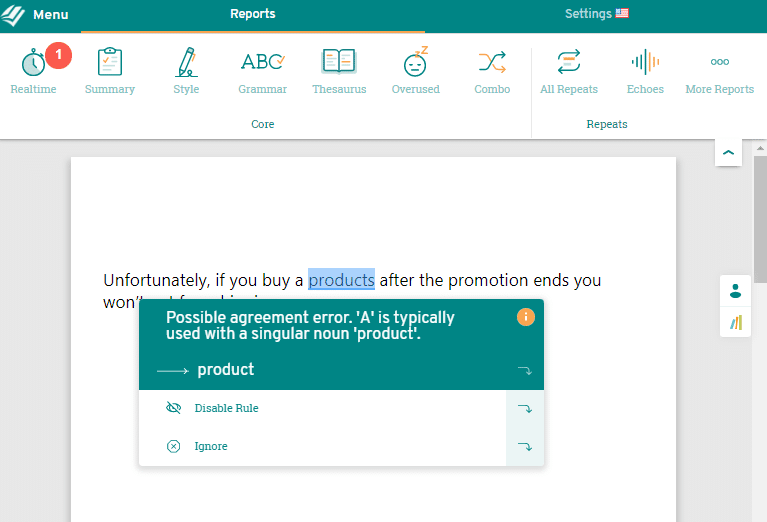The world’s top companies and organisations have long known that words matter—how you use words to communicate with your customers is critical to your success. If any part of your communication is ineffective, or worse, alienating to your customers, your business will have a hard time succeeding.
Communication has become a high priority for companies in recent times as they increasingly focus on Customer Experience (CX). CX is a customer’s overall experience with a brand’s products and services. When companies focus on customer experience, it pays off in big ways.
According to research by Forrester Consulting, companies who make CX a priority experience the following:
- 1.6x higher brand awareness,
- 1.5x higher employee satisfaction,
- 1.9x higher average order value,
- 1.7x higher customer retention,
- 1.9x return on spend, and
- 1.6x higher customer satisfaction rates.
Communication plays a critical role in how a customer experiences a brand’s product or service. That’s whether it’s a customer’s first interaction in a sales email, how a customer service rep communicates with them in a chat feature, or the language used in the onboarding process. Whatever the forum or channel, communication defines how your customers will think about your company. Yet while it’s obvious that companies need to take communication seriously, it’s not easy to consistently produce effective, customer-centric communication that creates a positive customer experience.
Most employees don’t have formal writing training, but with a few basic tips and tricks, they can improve their written communication skills. Below, I provide five simple principles for producing customer-centric communication that applies to employees at all levels and can be used to produce any type of document or communication.

1. Understand your customer, deeply.
Most communication advice begins with “know your audience”. But that advice isn’t very helpful. What does it mean to ‘know your audience’? Instead, what I suggest you do is write with empathy and follow the old cliche —“you don’t know someone until you walk in their shoes.”
For example, if you’re pitching to a potential client in an email, you should try and develop a rich picture of your customer’s worldview and perspective. You can do this by looking in several places: LinkedIn, company bio, blogs, Twitter, YouTube, to name a few. You’re trying to understand what they care about, what inspires them, and what they value. This knowledge can help you craft a tailored customer-centric communication that’s oriented around them and what they care about, rather than you.
When your customer is reading communications from your company, they should say, “This sounds like me!” or “This is exactly what I needed.” Focus on the benefit to your customer rather than a list of features. If you’re debuting a new product update, for instance, explain what customer problem it solves instead of the technical aspects of the change. Let’s look at some examples.
Imagine you’re releasing a new update to an app that drastically improves performance speed. Instead of saying, “Version 2.8 increases app bandwidth,” try saying something like, “With the release of Version 2.8, you can access your content faster than ever.”
The second example reflects an understanding of your customers’ needs and therefore increases buy-in. With a focus on benefits, they’ll be more likely to want to upgrade, rather than feel nervous about a change in features.

2. Use the language of your customer
Because you are an insider at your company, it’s likely that you know all of your company’s jargon, technical terms, or acronyms. A customer, however, is not an insider, and they might describe their problem in unclear or incorrect terms. Instead of immediately correcting them or telling them you don’t know what they are talking about, start with the phrase “Tell me more” and then end with how they described the problem.
Using customer language is, of course, particularly important in customer service. Most customers who engage with your customer service team are doing so because they’ve experienced a problem. They’ll likely feel frustrated and angry. These types of conversations can easily get out of hand. But they don’t need to. That frustration and anger is an opportunity to turn the customer into a lifelong devotee of the product, if the conversation is handled in the right way.
Listen to your customer deeply. It’s important to mirror their language to show that you understand them and to make them feel at ease. The last thing you want is for a frustrated customer to feel belittled. Approach the conversation from a place of understanding before you dive into the solution. By simply acknowledging their pain and letting them know you will help them, you’ll help the customer feel heard.
Here’s an example of how this type of conversation might go:
Imagine a customer writes in saying that they can’t find the purchase page. Your site doesn’t have something called a purchase page, but you don’t need to tell the customer that right away. Instead, lead with something like, “I’m sure that must be frustrating. I can help you with this. Tell me more about what you mean when you say you can’t find the purchase page.”
Once they’ve explained what they’re looking for, you can offer a gentle correction coupled with a solution: “Ah understood! I think what you are looking for is the shopping cart. Let me get you there right now.”
The purpose of using their language is that you are showing them that it’s okay to be confused, that you are listening to them closely, and you are trying to understand the problem from their perspective. If they end up having another problem in the future they are more likely to reach out because of this initial positive experience.

3. Talk to them like a real person
Most people believe that you need to sound ‘professional’ when communicating to customers. Yet what often happens in trying to sound professional is that you sound cold, impersonal, or robotic. So instead, drop the formal sounding tone and the jargon or technical terms, and write to them as if you are having a conversation.
One simple way to do this is to use the word you. So, for example, instead of saying “Purchases made after the promotion deadline are not eligible for free shipping” you would say “Unfortunately, if you buy a product after the promotion ends you won’t get free shipping”. Conversational, direct language like this offers a simpler, warmer experience for the customer that will encourage them to feel more positively about the brand.
Similarly, introducing yourself to the customer can help them feel like they’re talking to a real person instead of a robot. By starting a conversation with, “Hi there! You’re speaking with Andrew. How can I help you,” you’re letting the customer know that there’s someone behind the keyboard. If automation is a part of your customer service plan, make sure that any automatic messages sound friendly and human-like.
Formal language loaded with jargon offers a stilted and frustrating experience for your customers. First, using excessive jargon may mean that they don’t understand what you’re saying. If you use terms they’re not familiar with, you’ll prolong their confusion at a time when they’re already vulnerable. And using a formal tone often makes customers feel more alienated from you and your company. It might sound counterintuitive, but customers would rather talk to a real person who has flaws and makes mistakes than someone who has all the answers but communicates them in a distant, formal way.
Empower your customer services representatives to be able to say things like, “I’m so sorry, I misunderstood,” or “We made a mistake and I’m happy to help fix that.” Your customers are people, too—they’ll understand. And, they’ll be more likely to return in the future.

4. Proofread and Polish Everything You Send with a Tool like ProWritingAid.
Typos and spelling mistakes make your customer think you didn’t care about them enough to make sure your writing was polished. But not only that, clean, clear writing helps ensure that your customers understand exactly what you are trying to say. If your sentences are too long, too complicated, or awkwardly constructed, your customer may have to try to decipher your meaning. This can be frustrating for them and lead to misunderstandings.
You want to use clear, action-oriented language when talking to your customers. Style basics like using active voice rather than passive voice can help your customers understand what you’re saying. Similarly, ensuring your writing is readable creates a better experience for your customers.
Many people think that effective writing needs to use advanced language. The opposite is true. Research shows that most adults prefer to read communications written at a seventh grade reading level—well below what you may have thought. To ensure your communications are at this readability, you need to use simple, straightforward language. Instead of saying something like, “Okay, I’ll terminate your contract,” consider, “Okay, I’ll end your contract.” Both sentences say the same thing, but the second uses approachable language that your customers can easily understand.
Knowing that factors like readability and passive constructions can negatively affect customer experience is all well and good, but how do you monitor your own writing to ensure you don’t make these mistakes? And how do you ensure your employees use appropriate language, too? That’s where editing technology can come in.
Editing technology has come a long way and tools like ProWritingAid go way beyond just catching your spelling mistakes. They offer suggestions around readability and style that contribute to the overall customer-centric power of your communication. You can even create your own style guide to make sure that your company’s brand guidelines are always on hand.

5. Never Write Alone
One of the hardest aspects of writing is creating the right tone. If you’re responding to a difficult customer complaint, you might ask yourself over and over “Do I sound too short?” or “Do I come across as empathetic?” For this reason, it’s useful to have someone else read your response to give you a second opinion. This advice is true for even the most seasoned writers; it’s nearly impossible to step outside our own perspective, our emotions, our assumptions and see things more clearly.
So, the next time you have to send a delicate email to a customer, write a first draft and ask one or two people to read it. Before they read it, say some version of this to them: “I’m trying to come across as understanding while also telling them we can’t fulfil their request. Am I actually doing that in the email?”
Having a feedback loop is even more important for customer communications like blog posts, product brochures, and reports. When sending important communications like this, you should never send out the first draft. It’s best to have at least three people involved in the editorial process: a writer, an editor, and a third party with fresh eyes who reviews the final product to make sure it sounds good and makes sense.
Don’t waste time overthinking your writing on your own. After you’ve read something multiple times, you’re less able to see its flaws and make appropriate changes. Instead, write up something, re-read it once, and then share with as many people as possible, even if your team is remote. Their insights will very likely increase the odds that your communication is customer-centric.
Take Aways
The reality of business today, especially considering the digital revolution and the emphasis on Customer Experience, means that communicating well is a necessity not a luxury. If any part of your communication strategy alienates your customers, from the first social media post they see to the final email in their onboarding sequence, your conversions and retention will suffer.
Effective communication should be the goal of all members of an organisation, from the CEO on down. Every person in your company should be empowered to write effectively. Words do indeed matter, and the more you and your company embrace that belief, and draw upon principles like the ones offered here, the better the relationships you will build with customers and the more successful you will be.
Originally published Aug 19, 2020, updated Jan 16, 2023
